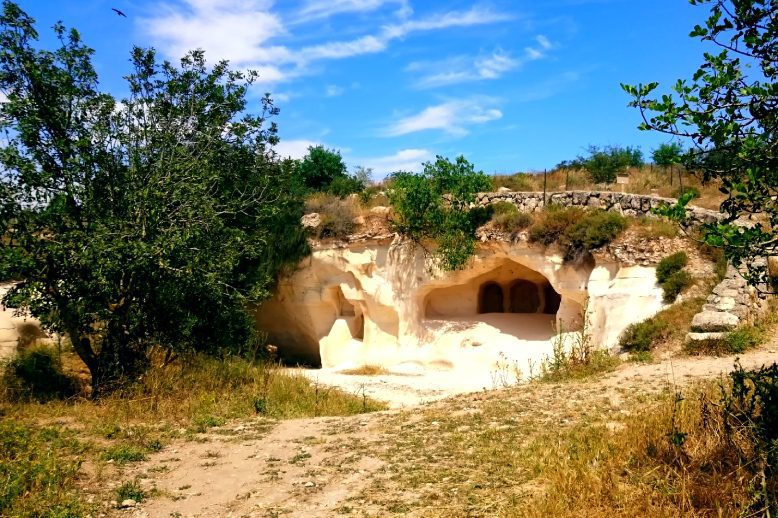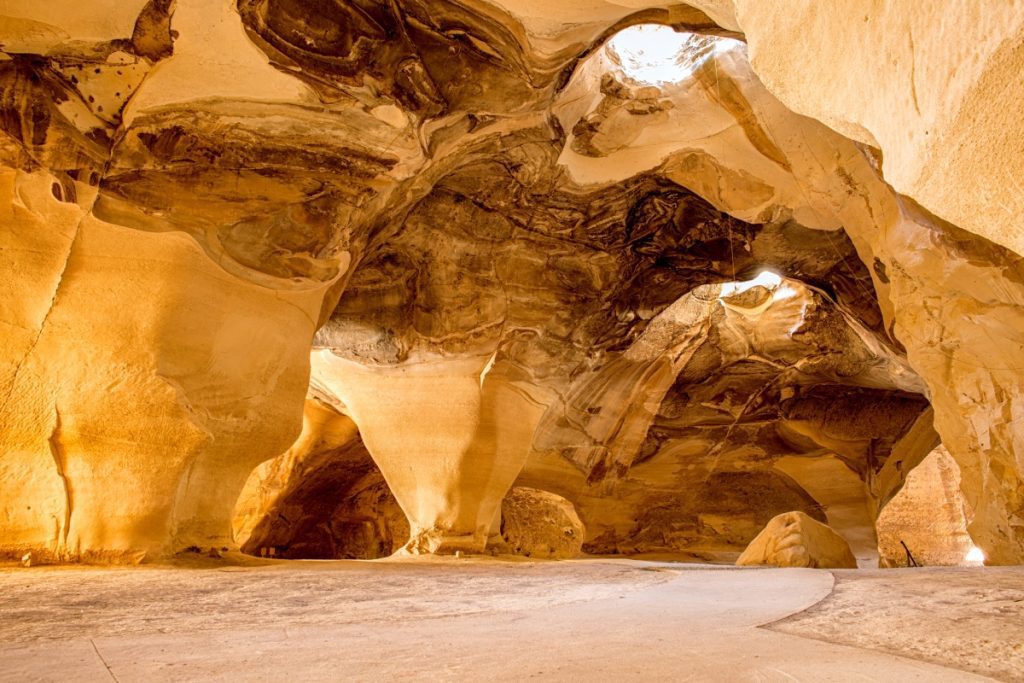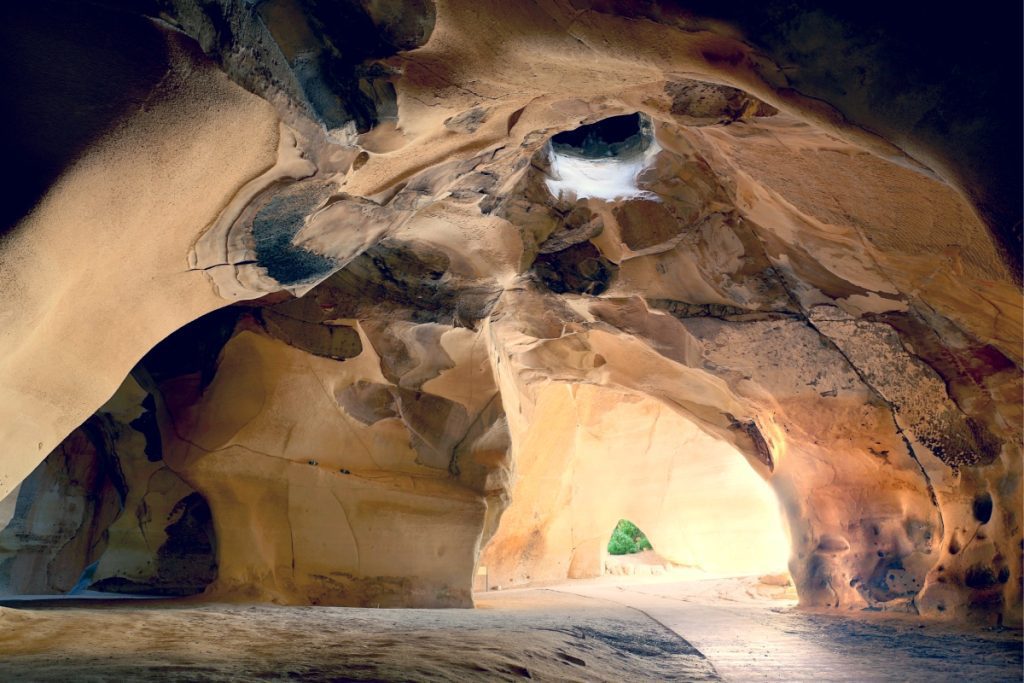Bell caves are centuries-old artificial quarries discovered in the Judean Plain. The caves are named for their shape, reminiscent of a bell. So far, about 800 bell caves are known, concentrated in groups, the largest of which includes about 200 caves. Most of the bell caves were hewn in a soft rock called chalk, which is very common in the lowlands. The chalk tends to oxidize on contact with air and water, darkening and hardening. A relatively thin layer of oxidized chalk is called a patina, while a thick layer, which can reach up to three meters thick, is called a Nari. The chalk rock covering the lowlands was oxidized during the geological periods until the surface became a hard Nari layer about two meters thick, which hides the chalk beneath it.

The Reason For the Bell Caves Shape
The inhabitants of the lowlands sought to build their houses with the local material available to them – the stone. Also, they preferred soft and convenient chalk for quarrying. But in their way stood the hard Nari layer. So they circumvented the problem by making a relatively small hole in the Nari; sometimes for the passage of only one or two people. And performed extensive quarrying work in the soft rock, which was removed from under the Nari ceiling. This ceiling usually lasted due to its strength and thanks to the arched bell shape, which evenly distributed the load on the sides. This structure faithfully served the quarrymen during the rainy and scorching days and helped maintain the moisture of the chalk that tended to dry out, crumble and harden in contact with air and water.

Most of the caves were hewn to a depth of a few meters. But there are extra-large caves that were hewn to a depth of 20 meters and more. Groups of hewers pierced the Nari at great distances from each other, but as the caves expanded, and the “bells” grew, there was often a fusion between two or more caves. This created very large spaces, with several Nari openings in the ceiling. In Beit Guvrin National Park – from its head and in Luzit caves, for example, there are huge spaces that sometimes consist of several dozen bell caves that have been connected.
The Quarrying of the Bell Caves
The quarrying of the chalk was done quite systematically: the quarrymen used iron chisels and deepened the pit each time in a uniform layer of about thirty centimeters. This fact emerges from the diagonal quarrying marks evident to this day on the walls of the caves, which are arranged at almost identical distances from each other. The quarry marks remained so clear that it could be seen whether the quarry was right or left. The material was removed through the opening in rectangular chunks, which were estimated to weigh five to seven kilograms.

The stones hewn from the bell caves were used for local construction and were even exported to the entire lowlands and the southern coastal plain. It is also possible that some of the material was used for lime, as evidenced by two lime kilns discovered in the area. Residents of the lowlands took advantage of the empty spaces left open near their homes for various purposes, mainly for storage, such as a columbarium, plastered water cisterns, and workshops. In cases where easy access to the cave was required, the original opening in the ceiling was blocked and replaced with a sloping entrance tunnel.
The Dating of the Bell Caves
It is customary to separate two types of bell caves: small quarry-caves for local use, dating to the days of the Second Temple; And large quarry-caves dating to the Byzantine period, which were used for industry and export. Industrial quarrying reached its peak in the early Arab period. Evidence of this can be found in the symbols of the crosses engraved in the upper parts of the caves, near the entrance, and in the Arabic inscriptions engraved in the lower parts. The tenth-century Muslim geographer Mukadasi wrote in his books that there are many marble quarries in the Beit Guvrin district, and since there are no marbles in the Land of Israel, it seems that his intention was for the bell quarries.

